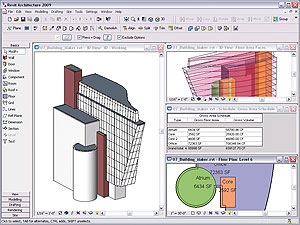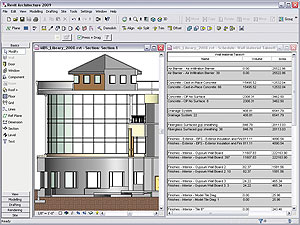Paul Woddy of www.revitguru.com looks at the adoption of Autodesk Revit and discovers that hard user numbers are difficult to find.
It is hard to imagine that there are people out there in the AEC market, who have not yet heard of Autodesk Revit or defined a Building Information Management (BIM) adoption strategy for the short, medium or even long-term, but the education of an entire industry is a mammoth task and I guess I will be explaining it for many years to come yet.
The commonly used benchmark for measuring market penetration in the AEC industry is AutoCAD, which has, over 25 years, reached a position of dominance which will be hard to assail. With this precedent, it is no wonder that after only eight years, Revit has still got some way to go to break out into the real world and become a household name as AutoCAD is.
I imagine that as subscribers to AEC Magazine you, the reader, will have been well informed of the technology and its journey to date but that is not to say that you have made the leap and adopted it.
If you asked the top 20 architectural practices in the UK whether they have Revit, I would guess that 18 would say yes, as most of these organisations have at least one copy of most bits of software in this arena, but what is the actual picture? How many of those top twenty are using it as the primary design tool? How has Revit adoption progressed and what momentum has it built up? Is it being used seriously in the industry and to what extent?
One question that I think should be a key addition here is whether, as Revit sales increase, we have another ADT on our hands, whereby the numbers look impressive but the reality of feature adoption is very different ¾ using ADT as if it were AutoCAD anyone? Well to answer the last question first, obviously Revit is not DWG-based and therefore this problem should not be as prevalent, but is Revit used as another drafting tool or are the principles of BIM being incorporated into the design process? Anyone who has been inflicted with my teachings will be familiar with the idea that the important letter in the BIM acronym is the ÙIÝ ¾ Information is the key, and Revit is an information capturing system.
I always suggest that the text tool should be a last resort, as any information should be added to the element and then tagged out, ensuring consistency, quality and co-ordination. The text tool is equivalent to bringing along a stick and a hoop to the Olympic cycling race. I promise that this is relevant to the subject, as many adoptees of BIM are still to fully embrace this aspect and unleash the full potential.
Murky waters
Autodesk keeps most of its Revit sales figures very close to its chest. Asking Autodesk staff outright will result in a pause and an ÙErm…Ý and then a redirection to the latest press release, which states, for the record, that the 200,000 milestone has been reached. This does not tell us too much (often because the Autodesk employees are not entrusted with the figures either) and certainly does not shed light on the UK situation, so we then have to turn to anecdotal evidence.
So who do we speak to for evidence? Well, I can tell you that 100 per cent of the companies I deal with have made some commitment to move to Revit in the next 12-18 months. However, as I am a deployment consultant and only deal with clients implementing Revit perhaps we need to look further afield.

I could also list a number of big name clients, representing hundreds of copies of Revit, which could provide some very impressive name-dropping, but apart from the fact that permissions would mean the article would never see daylight, it proves little. Of more interest is the move to Revit by contractors and owner/operators, who see virtue in information management and will ultimately be the winners in this adoption.
James Brown is the civil and structural engineering manager for Asda stores, responsible for ensuring timely and cost-effective production of design information. James has confirmed that it is an Asda objective to have all projects designed entirely within Revit by 2010.
AsdaÝs implementation of Revit has so far brought considerable benefits in sharing project requirements and design intent across the entire team. Further benefits have been gained through the generation of material quantities driven by parameters in the model components. By 2009 all structural design will be carried out in Revit moving to all design and quantities management by 2010. Asda has identified the following specific benefits as key points for its commitment to Revit technology:
- Early production of material quantities based on actual project requirements rather than approximations.
- The ability to optimise cut and fill requirements from a project for the most efficient use of the site, and to minimise material transportation.
- Client requirements are easily translated to the design and construction teams through better co-ordinated project documents.
- Significant reduction in clashes between construction elements, which result from the geometric clash detection and visual appraisal of the model as the design progresses.
- All design teams are able to work more closely together by sharing design models, and thereby improving cross discipline co-ordination.
- Additional benefits that will ensue for the future will include the ability to use existing Revit models to evaluate feasibility of future alterations and expansions, and to assist in appraising maintenance requirements throughout the building lifespan.
Conclusion
Although Asda has only a small internal requirement for design products, its influence on the design market can be huge. Asda is indicative of several organisations that are collectively responsible for vast swathes of the built environment, and which are looking closely at BIM and what it brings to them. I could have copied many quotes from Autodesk case studies to write this article, or even gathered similar sound-bites from architectural and engineering clients, but in my mind, it is the likes of Asda that will provide the biggest push in the adoption of Revit ¾ hopefully without too much use of the text tool.






